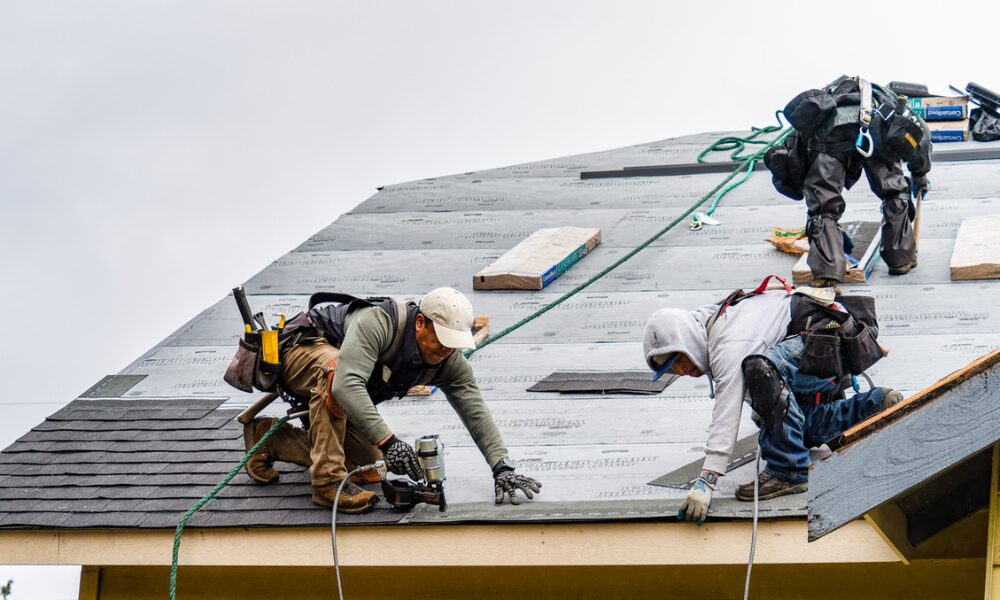Roof replacement is a significant construction task that brings both benefits and risks. We will explore the various safety precautions taken to protect workers, homeowners, and the property itself during this process. Replacing a roof means working at height, handling sharp tools, navigating steep surfaces, and dealing with weather uncertainties—all of which introduce the potential for accidents or damage. Responsible roofing teams know that a successful job isn’t just about laying shingles but also about maintaining a controlled, hazard-free environment from start to finish. Each safety step, from initial site planning to final cleanup, is designed to keep the process efficient and injury-free. These safety measures also help preserve the integrity of the new roof by ensuring that materials are correctly handled and installed under secure conditions. For homeowners, understanding the safety measures in place can offer peace of mind throughout the roofing project and ensure that everyone stays safe while the work is being completed.
Prioritizing Safety Before Shingles
- Securing the Work Zone for Workers and Residents
One of the most critical safety protocols during a roof replacement is securing the entire work zone. We will explore how professionals establish clear perimeters and minimize risks through planning and on-site precautions. Before any materials are removed or added, the crew marks off ground-level areas where debris might fall or equipment may be in use. This ensures that residents, pets, and neighbors stay clear of danger zones. Ladders are stabilized and inspected, while safety harnesses and tie-off systems are set up for workers who will be walking on inclined surfaces. Proper scaffolding can be installed, depending on the roof’s pitch and height, to provide additional support for the crew. Roofers also coordinate with homeowners to limit vehicle access to driveways or garages and provide guidance on navigating the property during construction. Even tasks like waste disposal are managed with precision, ensuring that old materials are safely dropped into designated containers. Whether the project involves installation or roofing repair, these zones become a necessary part of the worksite layout to maintain order and avoid injuries.
- Using Protective Gear and Equipment on the Job
Proper safety gear is essential for every worker on a roofing crew. We will explore the importance of helmets, harnesses, non-slip boots, gloves, and safety glasses when performing tasks that involve elevation, using tools, and working with sharp materials. Safety helmets protect against falling objects, while harnesses prevent dangerous falls, a leading hazard in the roofing industry. Workers also use tool belts that allow them to access equipment without needing to walk repeatedly across the surface, reducing unnecessary movement on potentially unstable areas. Proper footwear is critical when navigating sloped or wet roofs, and gloves reduce the risk of cuts when handling shingles, nails, and flashing. Safety glasses keep dust and particles from irritating the eyes, particularly during tear-off and debris removal. Each piece of gear is not only a precaution but also part of the daily work routine. Crew members are trained to inspect and wear this equipment before every shift, ensuring that no corners are cut when it comes to their safety.
- Weather Monitoring and Environmental Awareness
Roofing is heavily influenced by environmental conditions, and maintaining safety means staying responsive to weather changes. We will explore how contractors track forecasts and implement protective protocols when conditions shift unexpectedly. High winds, rain, and excessive heat can all turn a routine job into a dangerous one. Crews often begin the day by reviewing weather predictions and checking for conditions that may require delays or early wrap-ups. If wind speeds increase during the job, loose materials are secured immediately, and temporary halts may be issued to prevent objects from becoming airborne. When rain is in the forecast, protective coverings like tarps are kept ready to shield exposed portions of the roof from water intrusion. Heat can also be a hazard—working on dark, reflective surfaces in high temperatures increases the risk of heatstroke or dehydration, so water breaks and shaded rest areas are built into the schedule. By making weather awareness part of the safety strategy, roofing teams reduce the likelihood of sudden disruptions or dangerous conditions.
- Safe Handling of Tools and Materials
Every roof replacement involves tools, nails, heavy shingles, and other construction materials that require careful handling. We will explore how organization and clean working habits contribute to overall job safety. Tools are stored in secured areas, often in tool belts or containers attached to scaffolding or ladders. This minimizes tripping hazards and prevents the need to carry sharp or heavy items by hand up and down ladders. Materials like shingles and underlayment are lifted using pulley systems or ladders with mechanical assists to reduce strain and avoid dropping items from the roof. Crews are trained to lift and place materials with attention to body mechanics, which helps protect against muscle injuries. Debris is cleared throughout the day, not just at the end of the project, keeping walkways and the roof itself as clutter-free as possible. These disciplined work habits reduce accidents while keeping progress smooth and steady, proving that safety and productivity go hand in hand.
Roof replacement is more than a structural upgrade—it’s a high-stakes project that demands careful safety planning at every step. From preparing the site and securing tools to navigating the weather and wearing protective gear, each decision made on a roofing job has a direct impact on health, property protection, and project success. These measures aren’t just rules—they’re a mindset adopted by responsible teams to ensure the people involved are protected while the work stays on track. Homeowners should feel confident knowing that the roof over their heads was built with care not only in materials but in the safety culture of those who installed it. When a roofing team prioritizes safety, the result is not only a durable roof but also a well-managed, respectful construction experience that leaves no room for compromise. By understanding these safety practices, homeowners gain a clearer picture of what happens behind the scenes—and why it all matters.





























